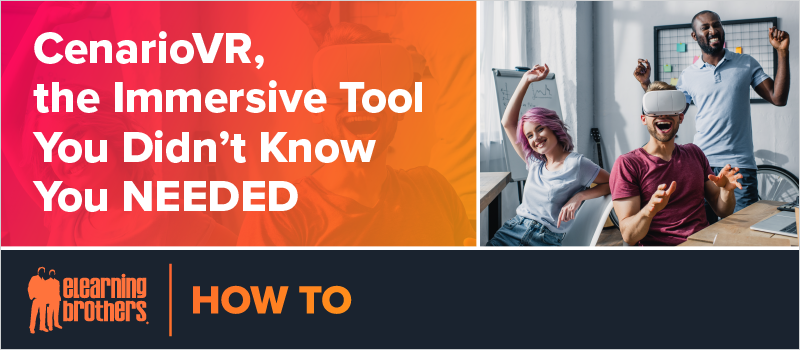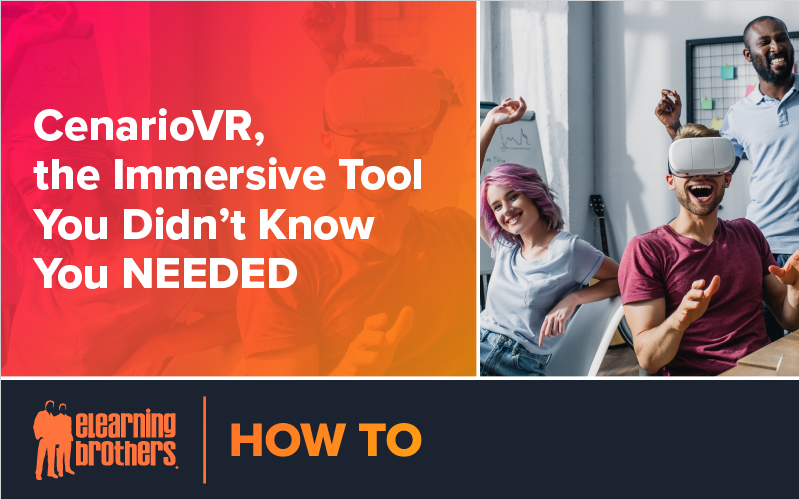
In this webinar, Veronica Grunberg and Andrew Townsend showed attendees what sets CenarioVR® apart as a top-tier rapid virtual reality builder.
First things first, what is virtual reality?
VR is a completely simulated environment that replaces the real world. It is great for training in many areas because it allows you to really experience a task or process before doing it in real life.
There are a few different types of VR training:
Passive
The learner is “taken on a ride” through the virtual experience, without interaction. This uses 360-degree video, can be viewed directly on a desktop, but is not truly immersive VR. The lack of interaction makes this a weak training method.
Interactive
Utilizes inexpensive hardware and/or mobile devices to allow for interaction with “gaze to select” activation. Generally used with 360-degree video, but can be used with fully rendered scenes.
Advanced Interactive
Allows for advanced interaction, such as grabbing and picking up objects in the virtual world. Requires more development time and resources.
When should you use VR for training?
- Anything where situational awareness is key, such as security or loss prevention
- Dangerous environments, such as working on oil rigs
- Situations that would be difficult to replicate, like large construction sites or factory floors
- Areas in which mistakes would be costly, such as in the healthcare industry
To create a truly interactive and immersive training experience, you want to include:
- 360-degree video or panoramic images the learner can explore on a desktop browser, mobile device, or with a VR headset
- Interactive scenes the learner can move through like a story
- Questions and hotspots to test the learner’s knowledge
- A way to track and score the user’s activity
CenarioVR makes it incredibly easy to do all of the above!
Each 360 video or image becomes a single scene within your scenario, and you can tie them together into a story by adding objects to the scenes.
CenarioVR supports the following object types:
- Hotspots
- Questions
- Text
- Audio
- Video
- Images
- Timers
- 3D Models
- Timed Events
Creating interactivity in CenarioVR is very similar to building eLearning using an authoring tool like Lectora, Storyline, or Captivate. You can publish in similar ways as well, like HTML5, xAPI, SCORM, cmi5, or to CenarioVR Live.
In the webinar, Veronica and Andrew showed some examples of interactions built in CenarioVR. Watch the recording now.
To start building your own immersive learning, sign up for a free trial of CenarioVR.








